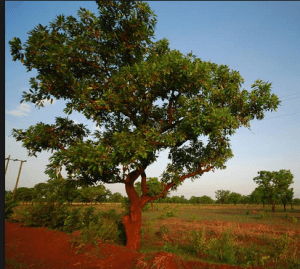Economic trees in Upper East Region under threat
 Some economic trees in some parts of the Upper East Region would soon become extinct if measures are not taken to safeguard the forest reserves.
Some economic trees in some parts of the Upper East Region would soon become extinct if measures are not taken to safeguard the forest reserves.
The trees are being destroyed in the course of clearing land for agriculture activities.
Among the most affected trees are the shea and baobab in the Kassena-Nankana area and its environs.
The wood from the shea tree is used for roofing and charcoal.
This came to light at a stakeholders’ engagement forum on Baobab and Shea Destruction held at Paga in the Kassena-Nankana West District of the Upper East Region.
The forum, which was organised by the Kassena-Nankana Baobab Women Cooperative Union and facilitated by the Organisation for Indigenous Initiatives and Sustainability Ghana (ORGIIS-Ghana) was sponsored by the Food and Agriculture Organisation (FAO) under its Farm Forest Facility Programme.
It brought together traditional rulers, Assembly members, technocrats, opinion leaders, security agencies, the media from the Kassena-Nankana Municipal and the Kassena-Nankana West District.
Women groups that are into baobab and the shea nut picking and processing were also in attendance.
The stakeholders said apart from the farming activities that lead to the destruction of the economic trees, the farmers also cut down the trees for charcoal production.
Speaking to the stakeholders, Mr Julius Awaregya, the Director of ORGIIS-Ghana, said this year, Nakong, one of the communities in the Kassena-Nankana West District lost 55 hectares of Shea parkland whilst Gia in the Kassena Nankana Municipal lost over 100 acres of Shea population due to Burkina Faso’s Settler farmers.
“Every year, we lose thousands of Shea trees in Pindaa area due to charcoal and fuel wood harvesters. This year, some people in Kayoro have gone back to timber business which is not sustainable, they cut the wood and transport it through Kajelo and Gia to Paga and Navrongo markets to sell.
“They also send the wood to Chiana and Kayoro markets to sell while some are used by the local people to roof their buildings. I am not against the local people using the resources to build their houses but since the trees are not replaced, it will not leave anything for our future generations,” he warned.
Mr Awaregya said he was worried that baobab tree branches could be cut down just for the harvesting of the leaves to sell to foreigners.
He regretted the cutting of timber in the few biodiversity areas in the two Districts and said the problem needed to be addressed.
On the way forward, the stakeholders called on the political heads of the various Assemblies to enforce their bylaws to ensure that the rampant cutting down of the economic trees was stopped.
They also advocated the seizure of baobab tree leaves that are transported through Paga, Pindaa, Kuliyaa, Bonia , Natugenia, Sirigu, Kayoro, Chaina, Katiu, Nakong, among others to the neighbouring countries of Burkina-Faso, Niger and Mali.
The traditional rulers and the representatives of the political heads of the Assemblies pledged their support to help deal with the menace.
They commended the FAO ORGISS-Ghana for the economic empowerment of many women groups in the area through the sustainable exploitation of the economic trees.
Source: GNA
